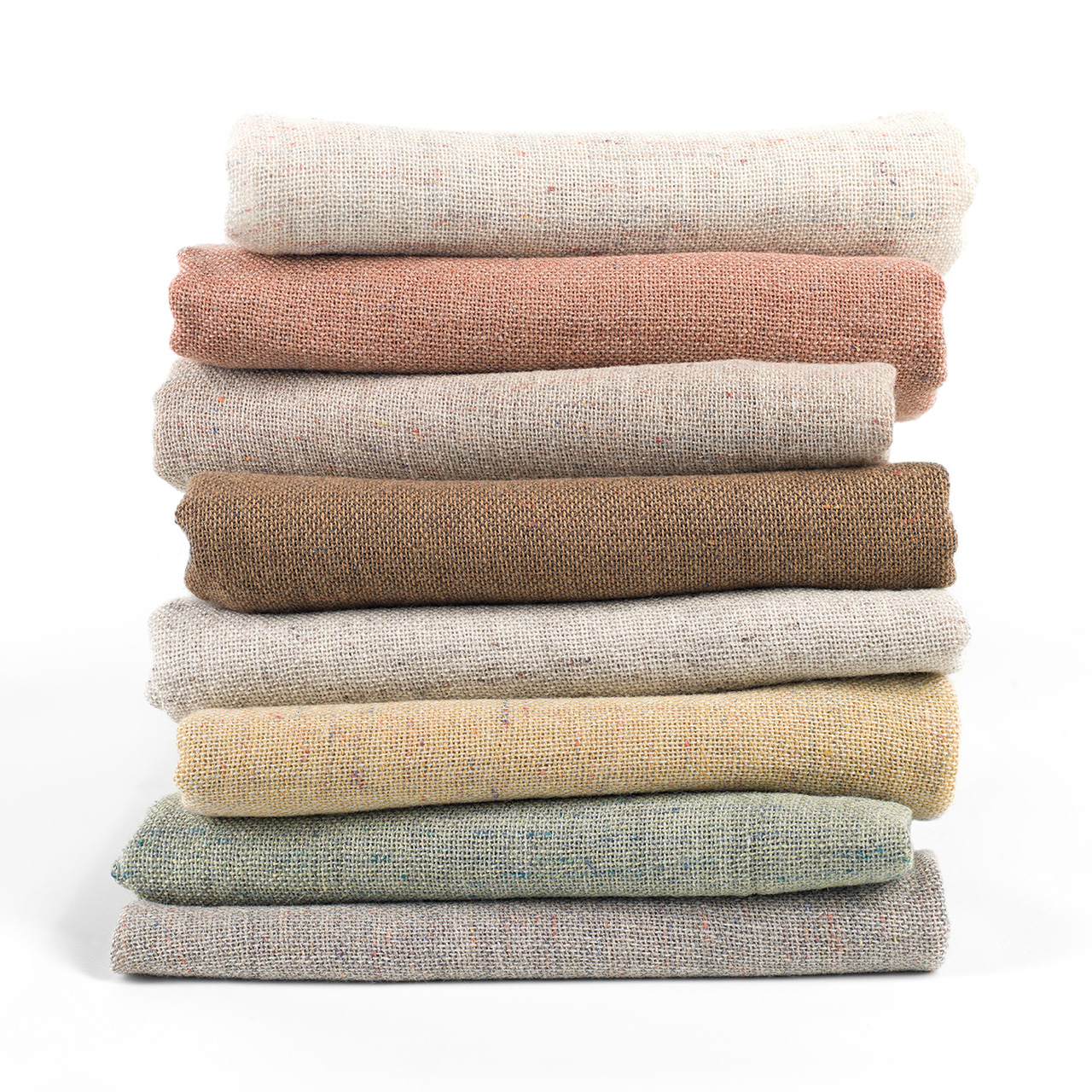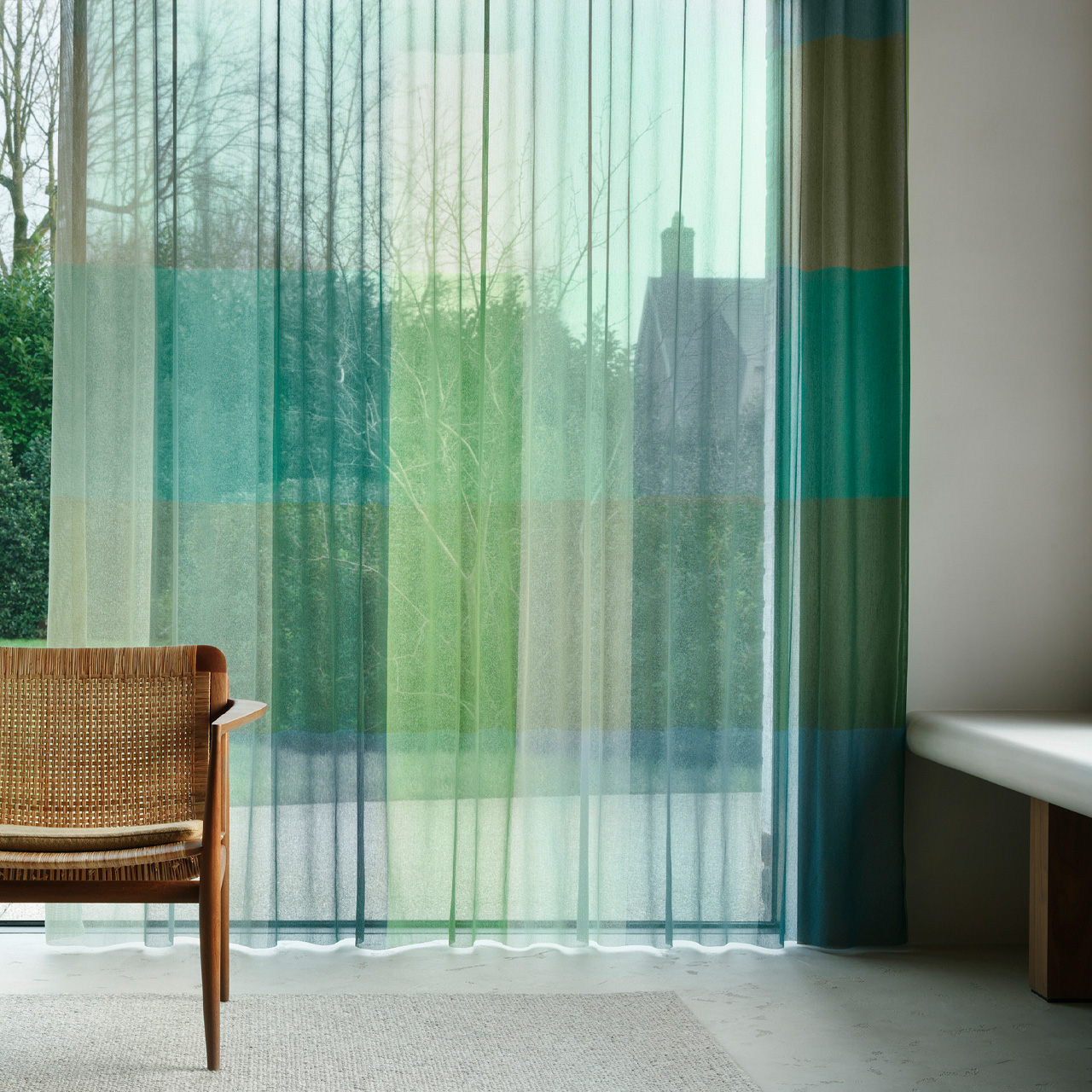Acoustics
De Ploeg offers fabrics that improve acoustic comfort indoors: they dampen disturbing ambient noise and reverberation, ensuring quiet and good intelligibility.
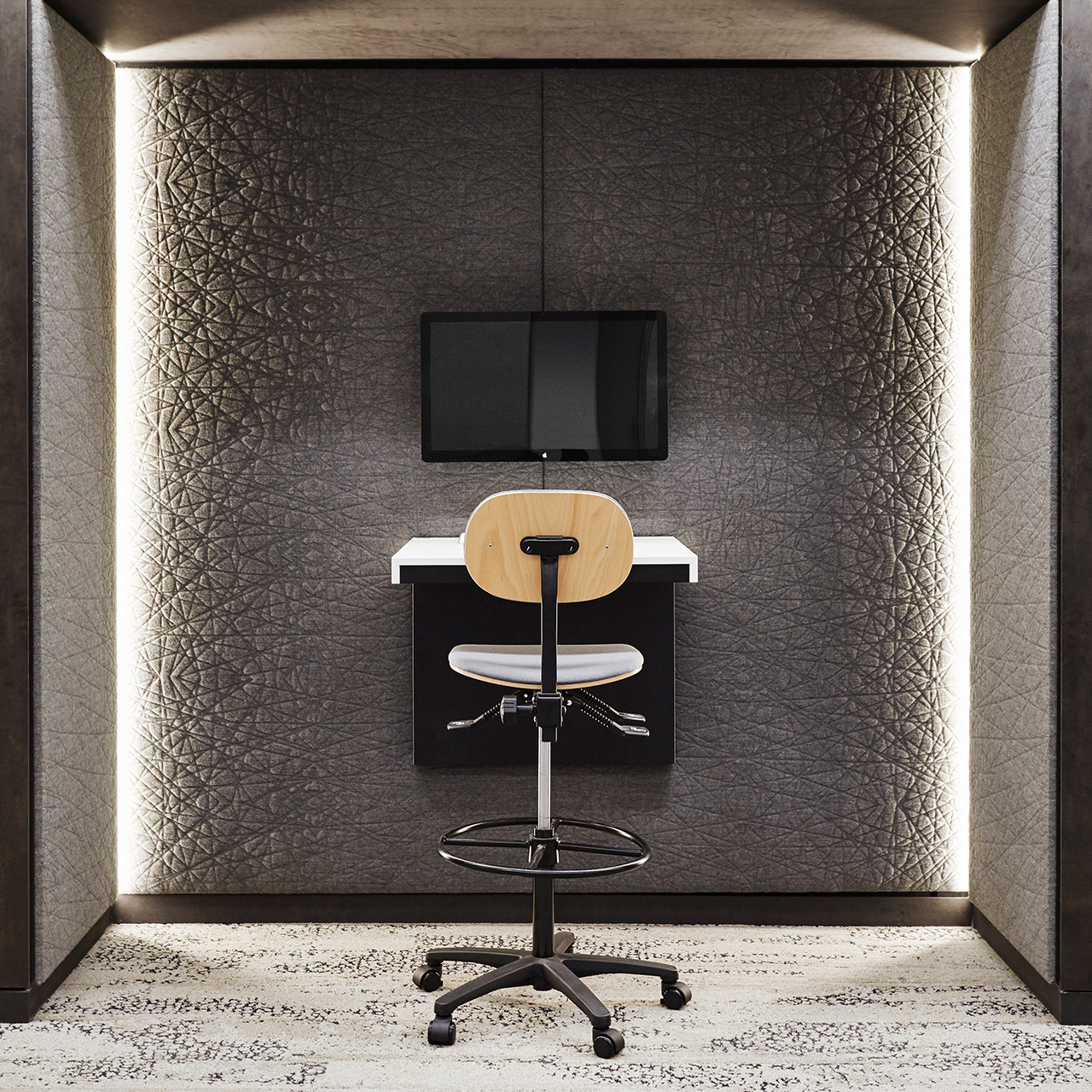
Fabric functionality and comfort: Acoustics
De Ploeg fabrics are designed to contribute towards a good living and working environment. Aesthetics, functionality, comfort and durability go hand-in-hand to achieve this.
This handout discusses the ‘room acoustics’ factor. De Ploeg fabrics improve the acoustic comfort in the indoor climate: they absorb annoying ambient noise and reverberations and, as a result, ensure peace and quiet and good audibility. This is not only pleasant, but also improves concentration and work productivity.
The indoor environment determines our comfort at home, in the care sector, at school and in the office. How we feel not only depends on the temperature, the relative humidity, the oxygen level, the light, the smell and the colour, but also on the noise level. When used professionally, De Ploeg fabrics improve the acoustics and adjust the acoustics to the room’s function.
A comfortable acoustic environment
Sounds do not die away quickly in rooms with hard surfaces because the sound reflects. This can cause the noise level to increase and cause a disturbance. De Ploeg offers a collection of sound-absorbing fabrics to deal with this problem. When used as a curtain or panel, the fabrics help to:
- Absorb ambient noise and reverberations.
- Improve audibility and communication.
- Increase attention and concentration.
- Acoustically separate the room.
Good room acoustics prevent stress, communication problems and tiredness.
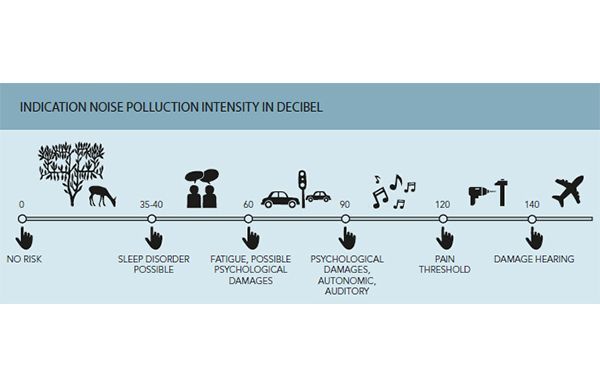
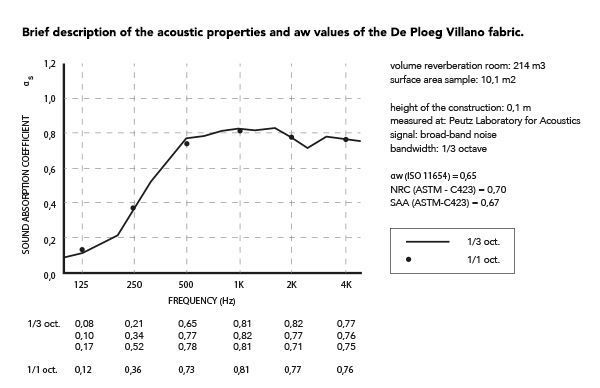
Acoestisch normation
Tested according to ISO 354:2003
The fabric’s absorption properties are important for De Ploeg’s noise-absorbing fabrics. The amount of noise the fabric can absorb depends on the thickness and density of the material, as well as the structure of the thread and the fabric. For a number of De Ploeg fabrics, the acoustic properties have been tested according to the NEN ISO 354 Acoustics standard by an independent institute. Since noise absorption by a fabric cannot be measured, the reverberation time for various frequencies is measured in a reverberation room. The reverberation time is the time in seconds until the sound has reduced by 60 decibels.
How does sound behave a room?
When a sound wave hits the surface of a material, part of the sound is reflected. When this occurs in a single direction, we call it reflection and when the sound spreads in every direction, we call it diffusion. Part of the vibrations passes through the material (transmission) and part is absorbed (absorption). The sound energy remains the same in the case of reflection, diffusion and transmission. In the case of absorption, the sound vibrations cause friction, which converts the sound energy into heat.
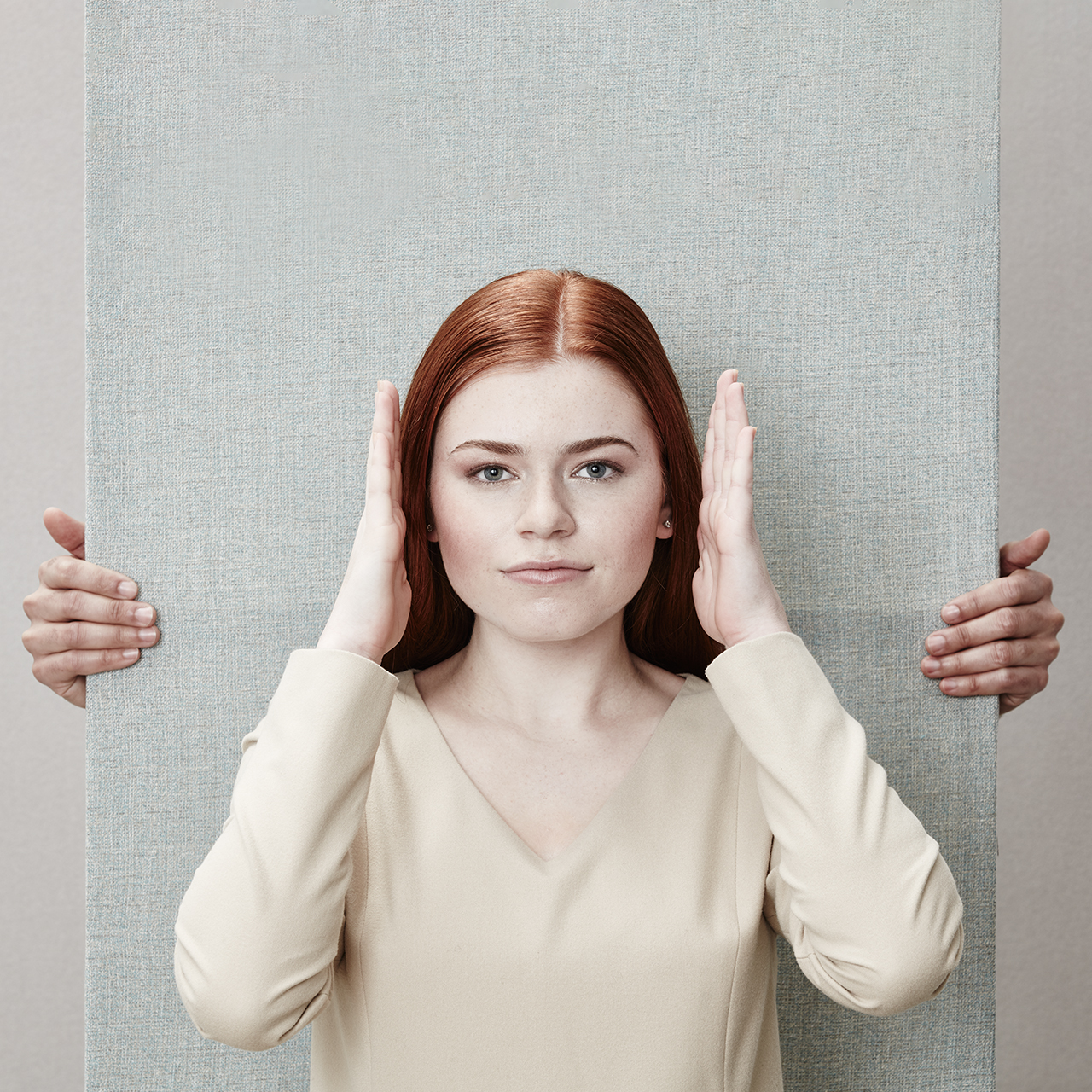
A measure of noise absorption
The energy of the sound incidence is the sum of the reflection, transmission and absorption.
If A is the fraction of the sound energy that is absorbed, T is the fraction which passes through the fabric and R is the fraction which is reflected (by reflection or diffusion), then A + T + R = 1. The absorption value aw represents the part of the sound energy that is not reflected: aw = 1 – R. The absorption value is also the sum of the absorption and transmission: aw = A + T. The greater the aw value, the more energy the material absorbs. An aw value only applies for a certain frequency. The NEN ISO 11654 Acoustics standard is a standard for converting the aw values of all frequencies into a single number. Human hearing is most sensitive to the frequency range of speech. Therefore, the acoustic values for the range 250 – 2,000 Hz are very important.
The tested De Ploeg fabrics have an aw value between 0.4 and 0.75. That means that they absorb 40-75% of the noise. The position of the fabric is also important for the acoustic effect:
- The greater the distance from the wall to the fabric (up to a maximum of 30 cm), the more noise the fabric absorbs.
- The larger the pleats, the more noise the fabric absorbs.
Aw values only give a general indication of a fabric’s noise-absorbing properties. For acoustic calculations, it is necessary to look at the reverberation times at different frequencies.
Variable sound absortption with curtains
Compared to acoustic panels, curtains have the advantage that they are more versatile; they can be used either open or closed for more or less sound absorption. This way, the reverberation time can be adapted to the activity taking place in the room at that time, such as a lecture, a meeting, group work or a music or singing performance.
Guidelines for the correct reverberation time
- Office or classroom 0.5 seconds
- Theatre 1 second
- Church 3 seconds
We will be pleased to provide you with further information on the possibilities and properties of our noise-absorbing fabrics and wall panels, or for acoustic advice.
More information on the possibilities of our sound absorbing fabrics and wall panels?
"*" indicates required fields
Other interesting articles
Mezzo – The warmth of wool
Discover Mezzo, the in-between curtain fabric that unites wool warmth and textile craftsmanship with subtle accent colors for characterful interiors.
Read moreTone – When colorful meets minimal
Tone is an expressive curtain fabric blending color and minimalism for sustainable, characterful interiors.
Read moreSolids & Stripes
Solids & Strips surprises with fabrics full of contrast - from calm to rhythm, and from understated to expressie - for an interior that feels like you.
Read more